Mon - Fri 9:00 - 17:00 / Saturday 9:00 - 13:00
About
Computer Science Engineering
In the present world, most of the activities are being computerized with unprecedented level of technological breakthroughs and error free operations. This has resulted in an increased demand for skilled and competent professionals in the computer engineering sector. To cater to this, the Department of Computer Science & Engineering was established at SDM Polytechnic in 2008 with an intake of 60 students per year. The Department aims at training and educating the students on industry-related topics through regular curriculum as prescribed by the DTE and also with supplementary programs, throughout their study.
The Department of Computer Science & Engineering is one of the most popular and well-known departments at SDM Polytechnic. The Department has well qualified and motivated faculty members who are highly committed to the overall development of the students.
Along with the regular curriculum, the Department organizes various guest-lectures/invited talks by eminent faculty from reputed institutions/industry experts to keep students up-to-date about the latest technological developments. The Department has state-of-the-art laboratories equipped with high-end computers and other required peripherals to meet the academic needs of students. These computer labs are aimed at giving hands-on training to the students in the most advanced areas in programming and software development.
Vison
To establish as a center of excellence for education in the field of Computer Science & Engineering to transform students into competent professionals.
Mission
To educate the students with best computational skills that ultimately bridges the industrial requirements.
To provide a learning ambience to encourage leadership qualities, team-spirit and ethical responsibilities
To encourage students to actively participate in lifelong learning and pursue higher education
POs
- Basic and Discipline specific knowledge: Apply knowledge of basic mathematics, science and engineering fundamentals and engineering specialization to solve the engineering problems.
- Problem analysis: Identify and analyze well-defined engineering problems using codified standard methods.
- Design/ development of solutions: Design solutions for well-defined technical problems and assist with the design of systems components or processes to meet specified needs.
- Engineering Tools, Experimentation and Testing: Apply modern engineering tools and appropriate technique to conduct standard tests and measurements.
- Engineering practices for society, sustainability and environment: Apply appropriate technology in context of society, sustainability, environment and ethical practices.
- Project Management: Use engineering management principles individually, as a team member or a leader to manage projects and effectively communicate about well-defined engineering activities.
- Life-long learning: Ability to analyze individual needs and engage in updating in the context of technological changes.
PEOs
- Have successful careers in computer science and information technology field that meets the needs of society enriched with professional ethics.
- Take up higher education and adapt to the changing technologies, tools and societal requirements.
- Design and deploy software that meets the needs of individuals and the industries.
PSOs
- Understand, analyze and develop programming skills in the areas related to Data Structures, Python, Java, Web-Design, Multimedia, Operating System, Databases, Software Engineering, Computer Hardware and Networking for the efficient implementation of computer software and hardware.
- Apply problem-solving skills and the knowledge of computer science to solve real world problems.
“Computer science empowers students to create the world of tomorrow.”
LABORATORIES
- IT skills for business automation, communication/connectivity, resource planning, work automation and securing information etc.
- students must be conversant with the basic IT skills which empower them to learn new technologies, adapt to changes, business development, communication etc.
- The aim of the IT Skills is to help the student to attain the following industry to perform jobs related to web design and maintenance, business process automation tool management, cyber security and safety and program assistant.
Course Objectives
- Demonstrate the basics of coding.
- Design and develop web pages that include static and dynamic content.
- Describe the basic concepts of Cloud and IoT.
- Express the workflow and business automation
- Recognize the best practices of Cyber Safety and security.
- Statistics and analytics help the learner to use the proper methods to collect the data, employ the correct analyses, effectively present the results, and conduct research, to be able to read and evaluate journal articles, to further develop critical thinking and analytic skills, to act as an informed consumer and to know when you need to hire outside statistical help.
- The python language is one of the most accessible programming languages available because it has simplified syntax and not complicated, which gives more emphasis on natural language.
Course Objectives
- Understand the tools of data collection, classification, and cleaning of data.
- Summarize the given statistical data
- Understand the measure of location and dispersion of data.
- Learn the basics of Python programming.
- Multimedia is one of the very effective forms of communication through which students can enhance their presentation skills.
- Learning multimedia enables the brain’s ability to make connections between verbal and visual representations of content, leading to a deeper understanding, which in turn supports the transfer of learning to other situations.
- Animation is the broad field of study that allows one to show their creativity, amplify their imagination and exercise graphic and technical skills.
Course Objectives
- Explore Multimedia features and applications
- Demonstrate various Photo editing techniques to enhance visual effects of the image.
- Construct graphic design.
- Demonstrate animation principles.
- CAD (computer-aided design) is the use of computer-based software to aid in design processes. CAD software is frequently used by different types of engineers and designers. CAD software can be used to create two-dimensional (2-D) drawings or three-dimensional (3-D) models.
- Engineering Drawing is an effective language of engineers. It is the foundation block which strengthens the engineering & technological structure. It is the transmitting link between ideas and realization.
- CAD allows experts to create more accurate design representations. CAD replaced manual design drafting, allowing design development, alteration, and optimization. CAD enables engineers to craft more precise designs and manipulate them virtually.
- Python is one of the programming languages which is versatile and feature rich yet simple and easy to learn, has applications in various domains. Python programming sets the basis for further study of web development, data science, IoT, machine learning etc.
- A database management system (DBMS) is system software for creating and managing databases. A DBMS makes it possible for end users to create, protect, read, update and delete data in a database.
- Database management has evolved from a specialized computer application to a central component of virtually all enterprises.
- Knowledge about database systems has become an essential part of an education in computer science. SQL is a powerful language for both querying and updating data in relational databases.
- Study of SQL empowers students to implement and work with relational data model.
- Student can learn the internal working of computers/laptops and prepare the student for a role as an entry-level IT support technician. This course sets a basis for different facets of information technology like computer hardware, software, trouble shooting and customer service.
- Assemble a computer as per given technical specifications following all necessary safety protocols and install, configure and setup an administrator for a Windows Operating System.
- Diagnose an installed software using the right diagnostic tools, identify the bug/issue, troubleshoot to resolve bugs/issues and ensure all data and applications are backed up before troubleshooting.
- Computer Networks Lab is used for students to work on practical experiments, projects etc. work related to courses such as Computer Networks, Wireless Networks, Mobile Communications, Internet of Things, Future Networks and Cloud Computing.
- All Desktops/Laptops in the Computer Network lab are interconnected through LAN and Wi-Fi.
- The lab consists of various types of high and branded routers, switches, load balancer with Intel based Servers having good configuration to support IT-Infrastructure on the campus.
- Data structures are the fundamental constructs around which you build your programs. Each data structure provides a particular way of organizing data so it can be accessed efficiently, depending on your use case. Python ships with an extensive set of data structures in its standard library.
- Data structures make it easy for users to access and work with the data they need in appropriate ways.
- Learning data structures with Python offer flexibility and ease of programming with many built in data structures and libraries.
- Java being the popular object-oriented programming language that empowers the innovation in this digital world, students will have sound knowledge of object-oriented programming concepts and design principles with java.
- Procedural programming is about writing procedures or methods that perform operations on the data, while object-oriented programming is about creating objects that contain both data and methods.
- Design a solution for a given problem using object-oriented programming concepts and apply all appropriate object-oriented design principles.
- The Operating System knowledge and skill is an integral part in the study of computer science. It provides the platform for all other application to run on the machine, thus knowledge of operating systems and administration becomes indispensable for understanding the computing environment.
- It is essential to have knowledge of operating system’s services and utilities to develop, deploy and maintain the software and hardware.
- The students will also be skilled in operating system virtualization, to create and manage virtual computing environments.
- Identify and use Linux commands to create and manage simple file processing operations, organize directory structures, and develop shell script to automate given simple task.
- Demonstrate the role and responsibilities of a Linux system administrator and analyze problems using suitable diagnostic tools and resolve issues.
- Software engineering is the establishment and use of sound engineering principles in order to obtain economically software that is reliable and works efficiently on real machines.
- Software engineering is the application of a systematic, disciplined, quantifiable approach to the development, operation, and maintenance of software; that is, the application of engineering to software.
- Student can ale to learn the typical software development life cycle (SDLC), list and differentiate the various SDLC models along with identifying where each model could be beneficial when applied.
- Demonstrate the application of design thinking as a process, explain how it helps in requirement engineering and mitigate risks.
- Study a given application requirement, create user stories, draw the appropriate UML diagram, and validate to ensure user story/UML diagram meet with the given requirement
- Full stack development refers to the end-to-end application software development, including the front end and back end. The front end consists of the user interface, and the back end takes care of the business logic and application workflows.
- Students can learn fundamentals of business process automation, React, Spring, MongoDB, REST API, DevOps practices, cloud deployment.
Faculty
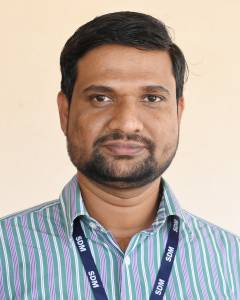
Mr. Dinesha
HOD
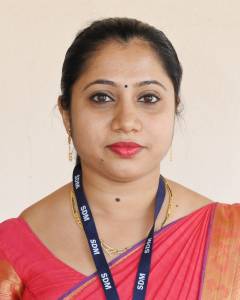
Ms. Renita V Fernandes
Lecturer
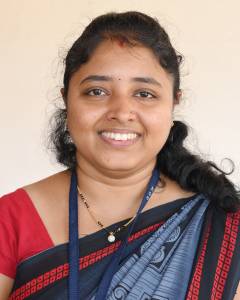
Ms. Prithvi V
Lecturer
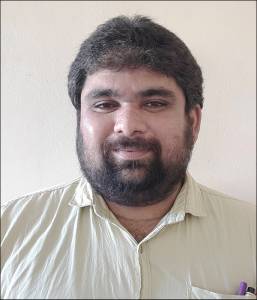
Mr. Varadaraj A S
Lecturer
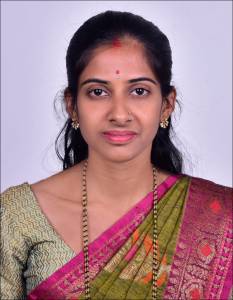
Ms. Anushree B K
Lecturer
Latest Post
News & Events
Online Workshop on Docker & Kubernetes for Final-Year CSE Students
The Department of Computer Science and Engineering (CSE) successfully organized an online workshop on Docker and Kubernetes for…
Students Display Creativity in Scratch Game Development Contest
The Department of Computer Science and Engineering organized a Scratch…
Internship Opportunities Talk for CSE Students
On 10th September 2025, SDM Polytechnic organized an insightful session…
Industrial Visit to Siri Gramodyoga Samsthe for Final-Year CSE Students
The Department of Computer Science & Engineering of SDM Polytechnic,…
Hands-on Workshop on React JS and Modern Web Development
The Department of Computer Science and Engineering organized a two-day…

